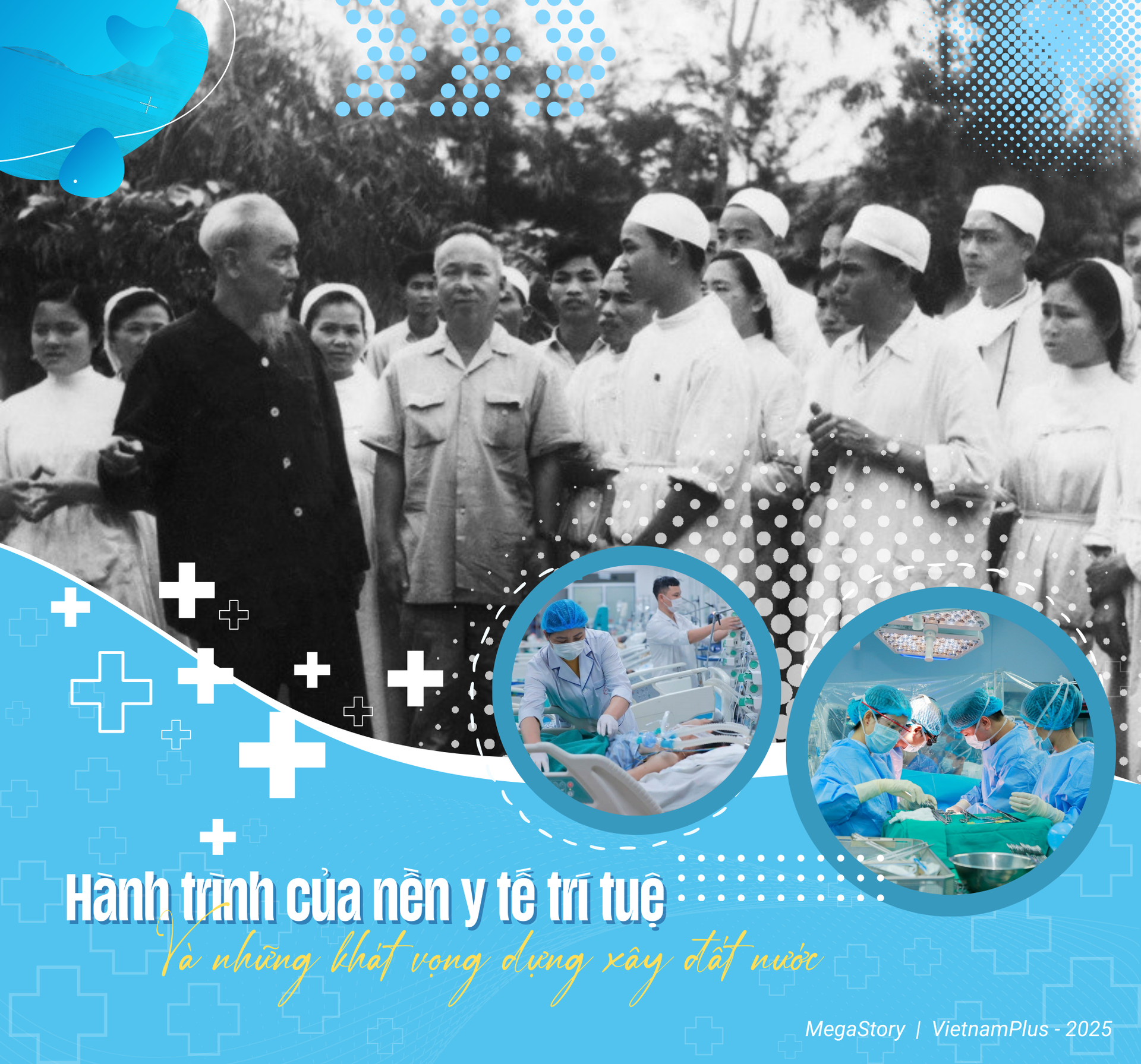

The success of the August Revolution in 1945 opened a new era in the history of the Vietnamese nation in general and the history of the health sector in particular. On September 2, 1945, President Ho Chi Minh read the Declaration of Independence at Ba Dinh Square, and introduced the Provisional Government of the Democratic Republic of Vietnam, consisting of 15 ministries, including the Ministry of Health.
During the two resistance wars against the French and the Americans to save the country, the health sector carried out the Party and Government's goal of: "All for the frontline, all for victory". The activities of the health sector throughout the country such as disease prevention, treatment, production and distribution of medicines and medical equipment... all aimed at the above goal.
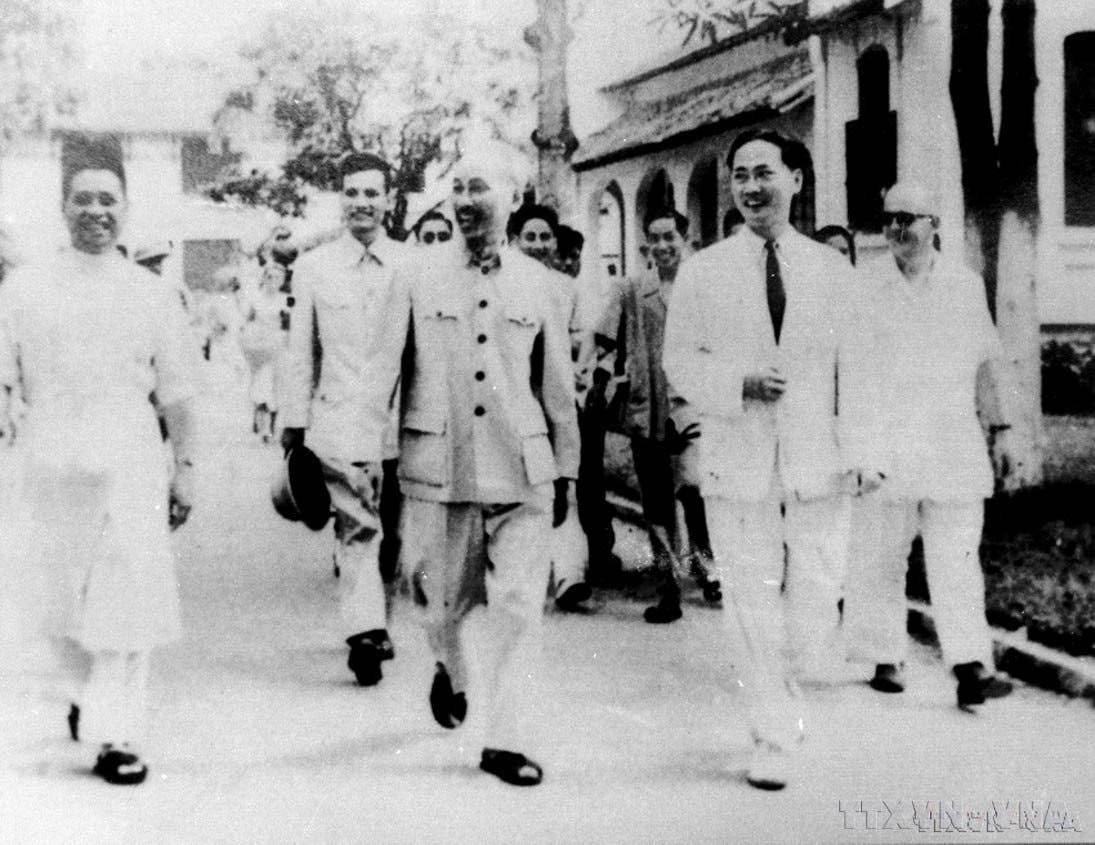
President Ho Chi Minh visits Viet Duc Hospital (1956). Photo: VNA
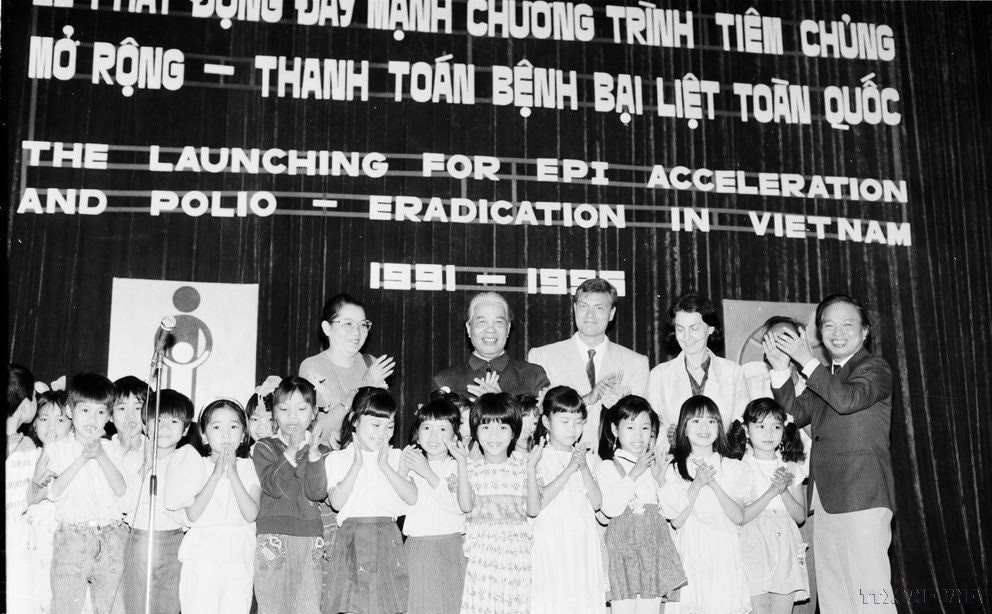
Chairman of the Council of Ministers Do Muoi, Minister of Health Song Hao and children in Hanoi at the launching ceremony of the Expanded Immunization Program to eradicate polio (1991). Photo: Thu Hoai - VNA
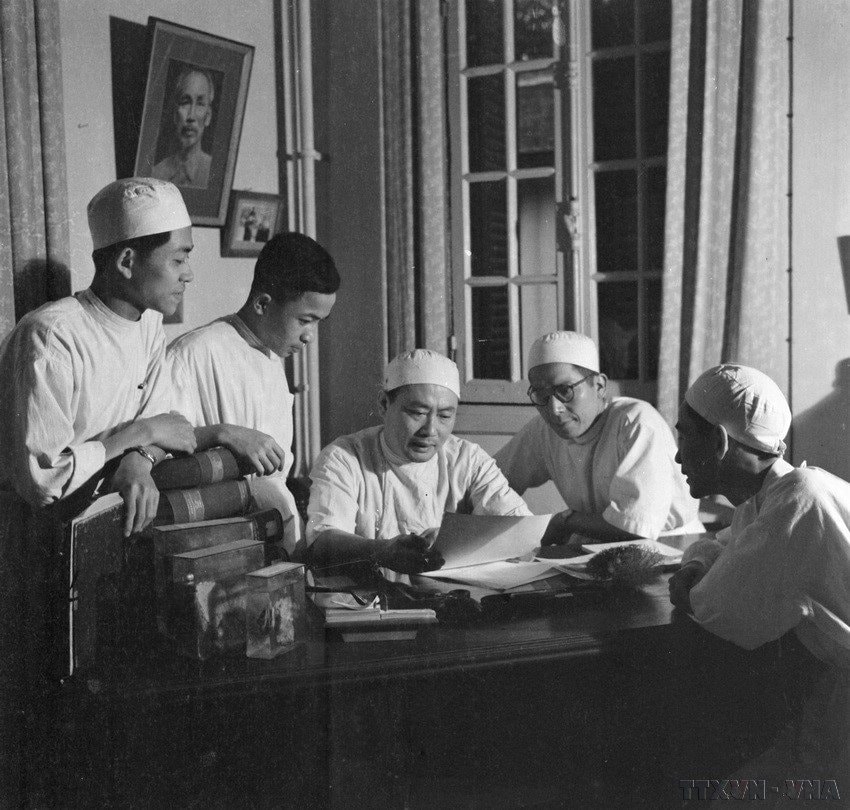
Professor Ton That Tung has contributed to the glory of Vietnamese medicine, with two great scientific inventions. That is the liver resection method named after him, a scientific work that has been internationally recognized as a standardized and classic liver resection method, applied by many advanced countries. In the photo: Professor Ton That Tung (Viet Duc Hospital) discusses with colleagues before the surgery. Photo: Vu Tiu - VNA
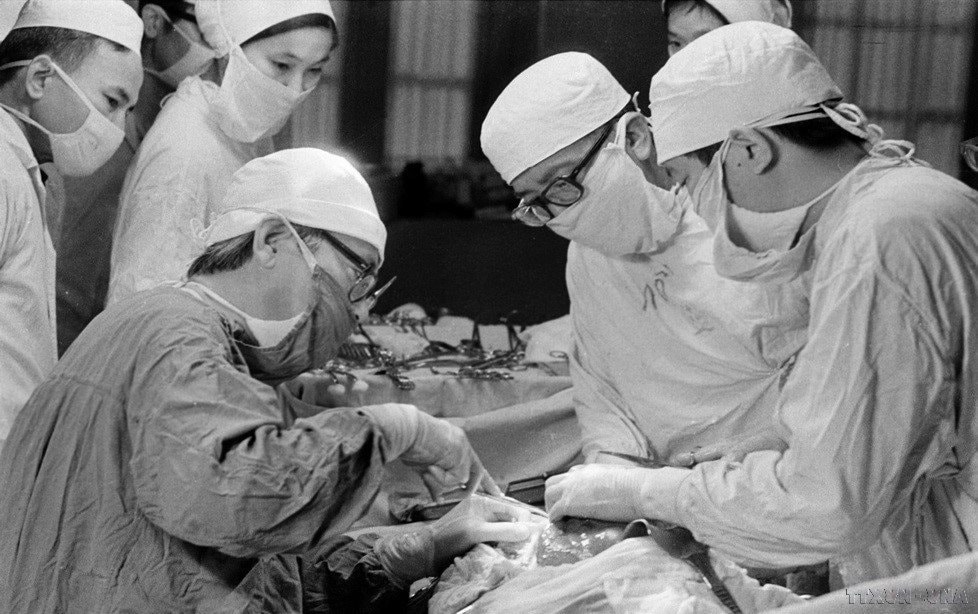
Professor Ton That Tung during a liver surgery (1976). Photo: Nguyen Chinh – VNA
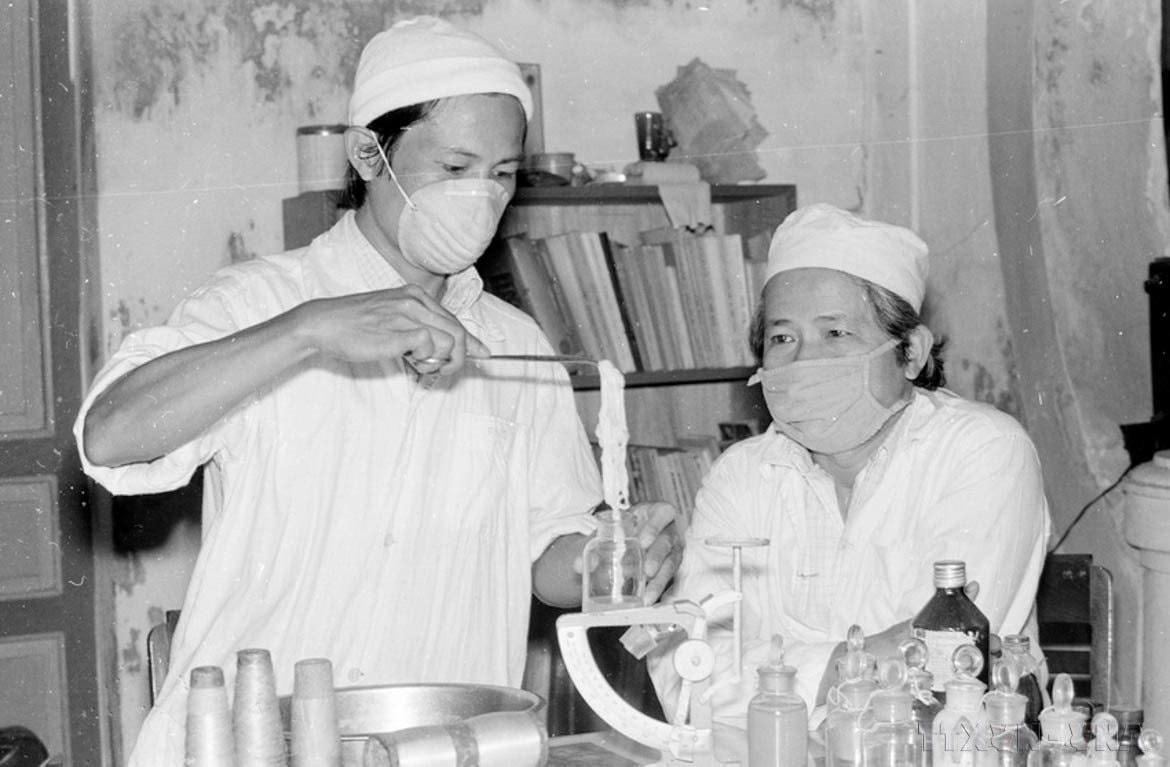
After the country's reunification, the health sector has made great strides and achieved important achievements in the cause of caring for and protecting people's health. In the photo: Technician Pham Nguyen Quyen (Hue Medical Academy) successfully researched absorbable sutures from local materials (pig intestines, animal skin, silk thread...) for use in surgery (1984). Photo: Thu Hoai - VNA
Although the main task during this period was to serve the war, and all human and material resources had to be concentrated on serving the front line, in the midst of countless difficulties and shortages, the health sector still maintained and continuously developed, ensuring good service for the care of wounded soldiers and disease prevention and control.
The white-shirted soldiers did not fear hardships or dangers, always standing side by side with the soldiers on the front lines against the enemy, ensuring the treatment and care of wounded soldiers, sick soldiers and the people. They were both doctors and steadfast soldiers directly holding guns to protect their homeland.
The deployment of the field medical system saved the lives of tens of thousands of soldiers. Infirmaries and field hospitals were set up in high mountains, deep forests and right in the middle of the battlefield. Ideas about “field operating rooms” or the birth of drugs to prevent and treat malaria, vaccines… protected the health of soldiers and people, while marking the creativity and bravery of medical staff during wartime, making an important contribution to the victory day of April 30, 1975.
.jpg)
Emergency images, medical research during the resistance period.
.jpg)
Emergency images, medical research during the resistance period.
.jpg)
Emergency images, medical research during the resistance period.
.jpg)
Emergency images, medical research during the resistance period.

After the complete liberation of the South, the country was reunited. Since then, the health sector has always identified the core task of protecting and improving people's health, improving the quality and effectiveness of medical examination and treatment. On the one hand, it inherits the great values that previous generations have worked hard to cultivate, on the other hand, the health sector has maximized its willpower and intelligence to conquer new heights. The multi-level health system covers from the central level to communes, wards and villages. Expanded immunization programs and disease prevention campaigns have been deployed in 100% of communes and wards, widely and systematically, laying the foundation for a strong health system providing primary health care for the people. In particular, Vietnam has built a modern health system, capable of responding quickly and effectively to health emergencies.
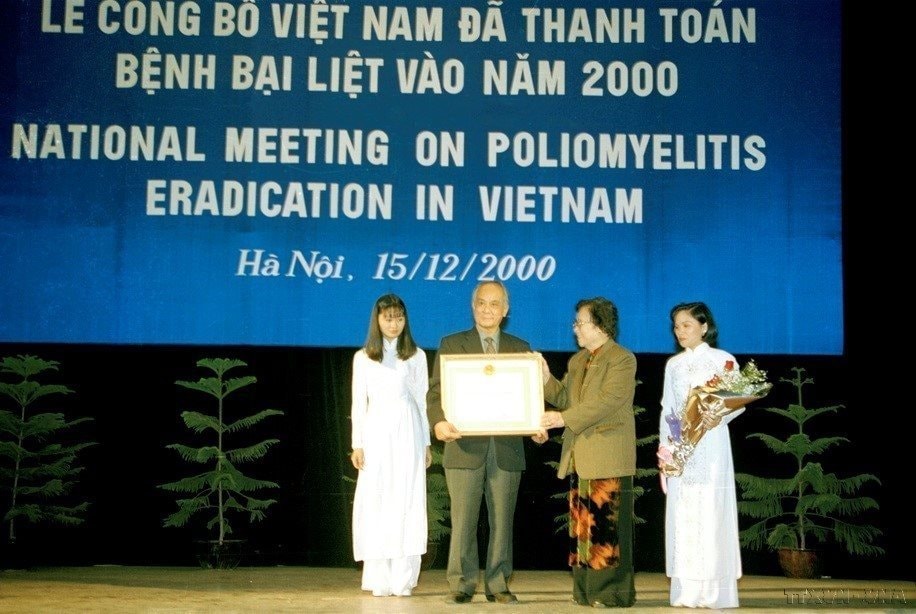
Vice President Nguyen Thi Binh presents the First Class Labor Medal to the National Expanded Immunization Program at the Ceremony to Announce that Vietnam had eradicated polio in 2000 (Hanoi, December 15, 2000). Photo: Huu Oai - VNA
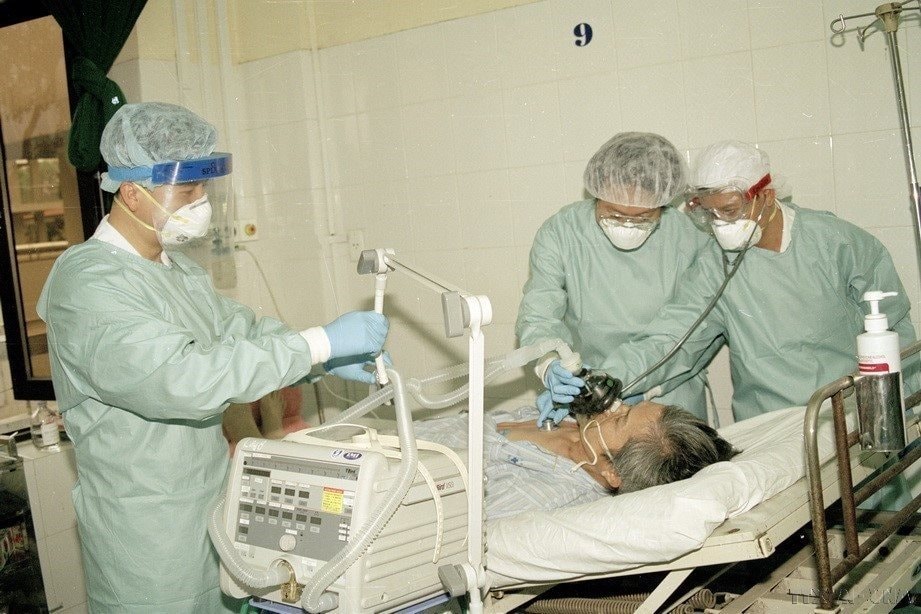
Doctors at the Hanoi Institute of Clinical Medicine for Tropical Diseases treat a patient with severe SARS (2003). (Photo: Huu Oai/VNA)
Up to now, the system of medical examination and treatment facilities has gradually developed from a few hospitals in the 1950s to 883 hospitals in 2004, increased to 1,162 hospitals in 2011 and by October 2024, there will be 1,718 hospitals, including 384 non-public hospitals, annually examining more than 170 million outpatients and treating more than 17 million inpatients; the number of hospital beds per 10,000 people continuously reaches/exceeds the annual target assigned by the National Assembly (in 2020, it will reach 28 hospital beds per 10,000 people, in 2023, it will reach 32 hospital beds per 10,000 people; the estimated implementation in 2024 is 34 hospital beds per 10,000 people). Along with that, the satellite hospital network has been expanded; Establish and develop a remote medical examination and treatment system, connecting upper-level hospitals with more than 1,500 medical examination and treatment facilities nationwide, including remote areas and islands; the traditional medical examination and treatment network continues to be consolidated and developed.
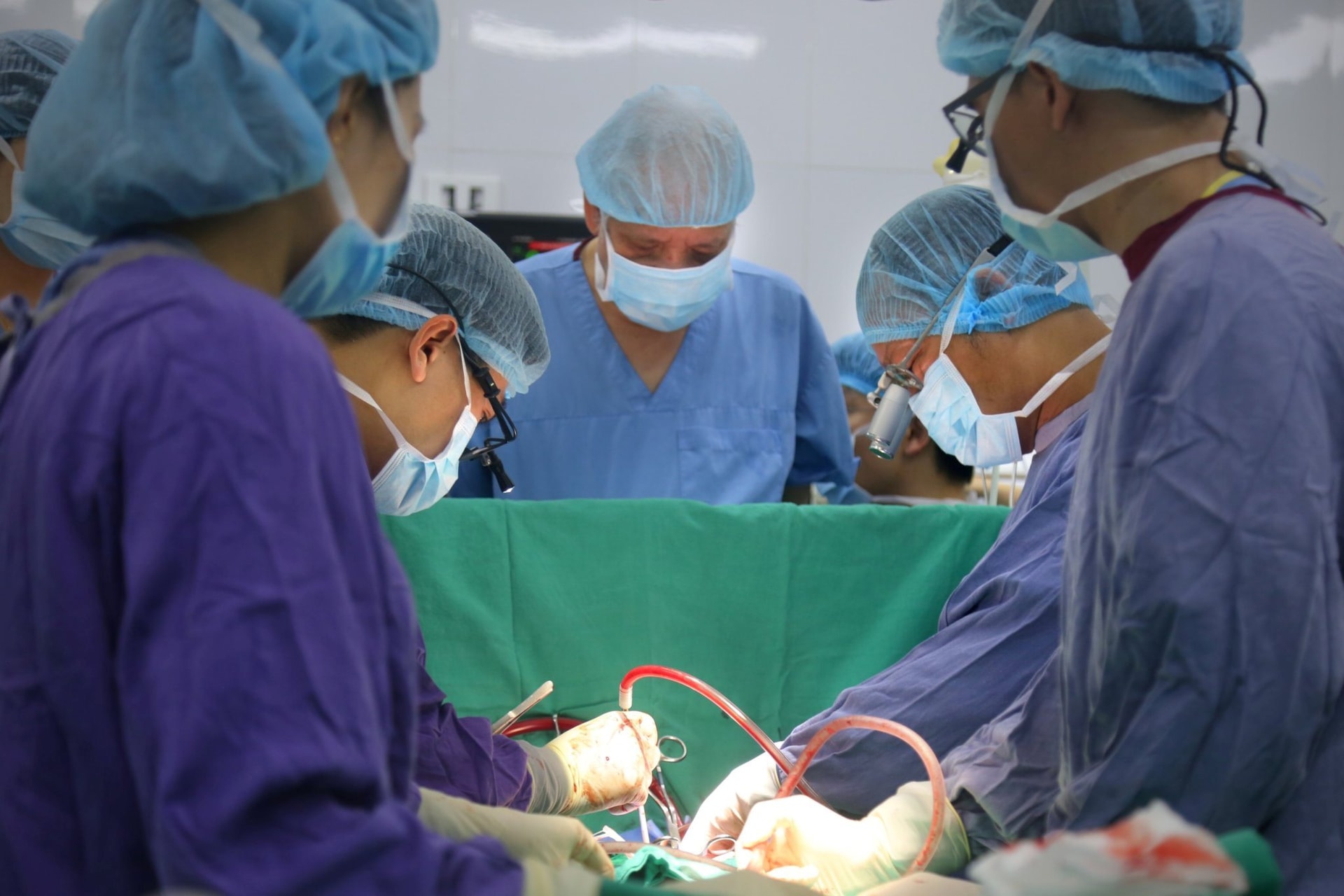
Doctors perform an organ transplant. (Photo: PV/Vietnam+)
From a backward and difficult medical system, the medical examination and treatment system has now made great strides in expertise. It has applied and mastered advanced techniques on par with the world, such as: Organ transplantation technology and transplantation of 6/6 major organs; multi-organ transplantation from brain-dead donors; open heart surgery techniques; pediatric endoscopic surgery; corneal transplantation; in vitro fertilization; stem cell transplantation; spinal surgery techniques using robots; artificial heart transplantation techniques; techniques using autologous hematopoietic stem cells in cancer treatment... In which, there are many medical specialties and fields where Vietnamese doctors are teachers, transferring techniques to doctors from countries around the world. These techniques have been and continue to be transferred from experts of central and upper-level hospitals to local hospitals across the country.
Vietnam has also successfully controlled many emerging diseases; in particular, Vietnam was honored to be recognized by the World Health Organization as the first country in the world to successfully control the SARS pandemic, after 45 terrifying days of disease prevention. Vietnam has also achieved many remarkable achievements in HIV/AIDS prevention and control over the past 35 years, helping to prevent nearly 1 million people from the risk of HIV infection and reducing about 200,000 AIDS-related deaths. Since the HIV pre-exposure prophylaxis (PrEP) program became a national program, by 2023, Vietnam has led the Asia-Pacific region in the number of PrEP users, with more than 123,793 clients accessing this service, of which men who have sex with men (MSM) account for about 80%, a bright spot in HIV-AIDS prevention.
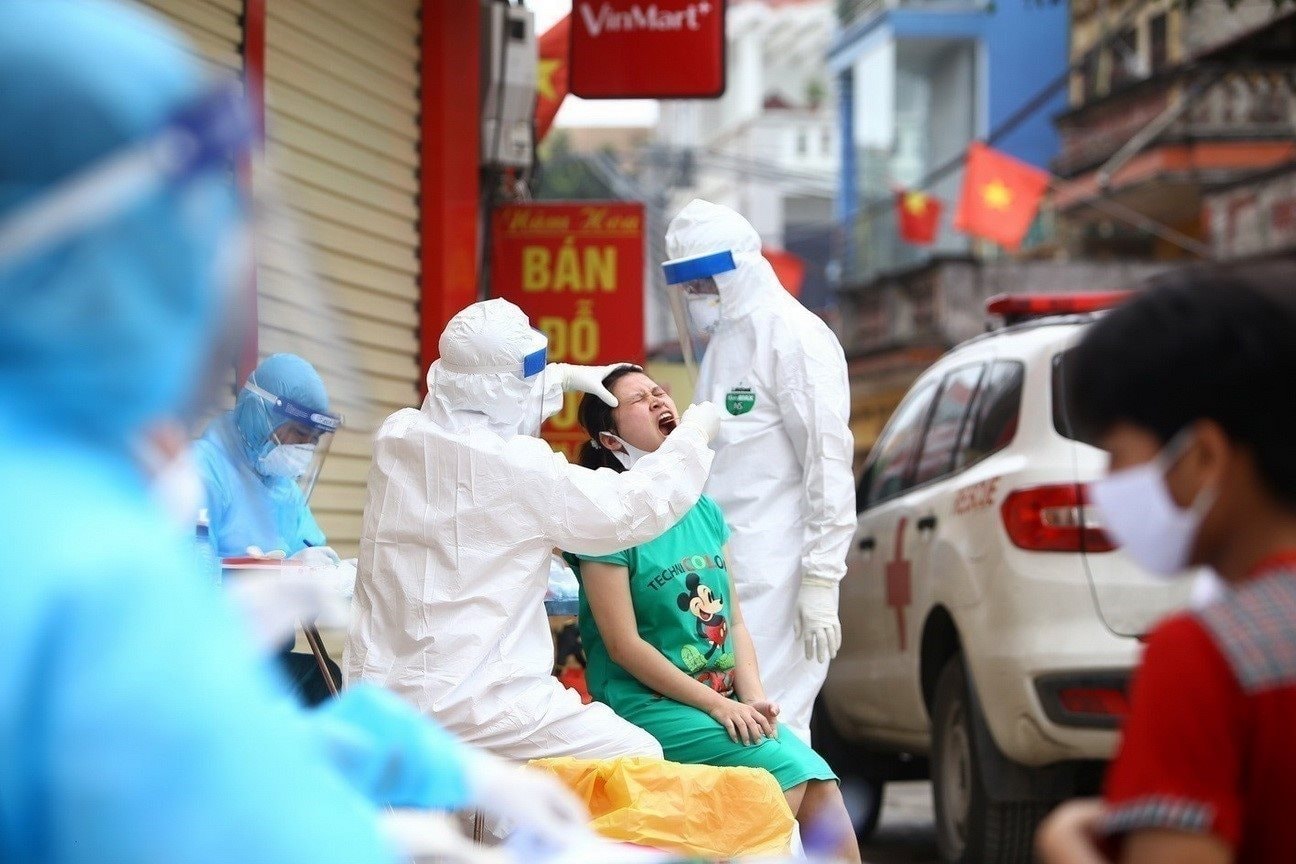
Medical staff of the Hanoi Center for Disease Control strive to collect enough COVID-19 test samples from all residents of Ha Loi village, Me Linh commune on April 12, 2020. Photo: Minh Quyet - VNA
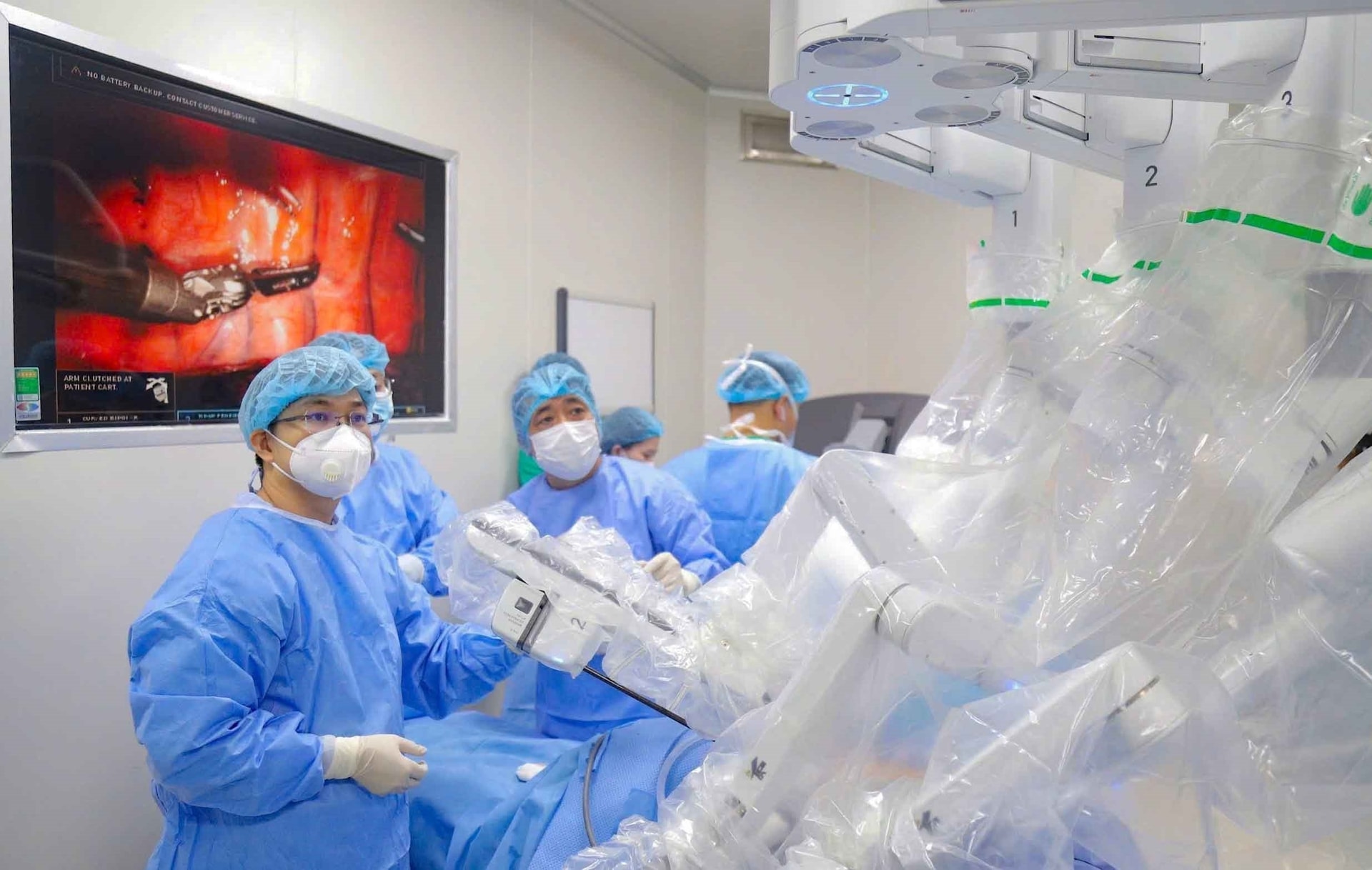
Doctors perform a robotic surgery. (Photo: PV/Vietnam+)
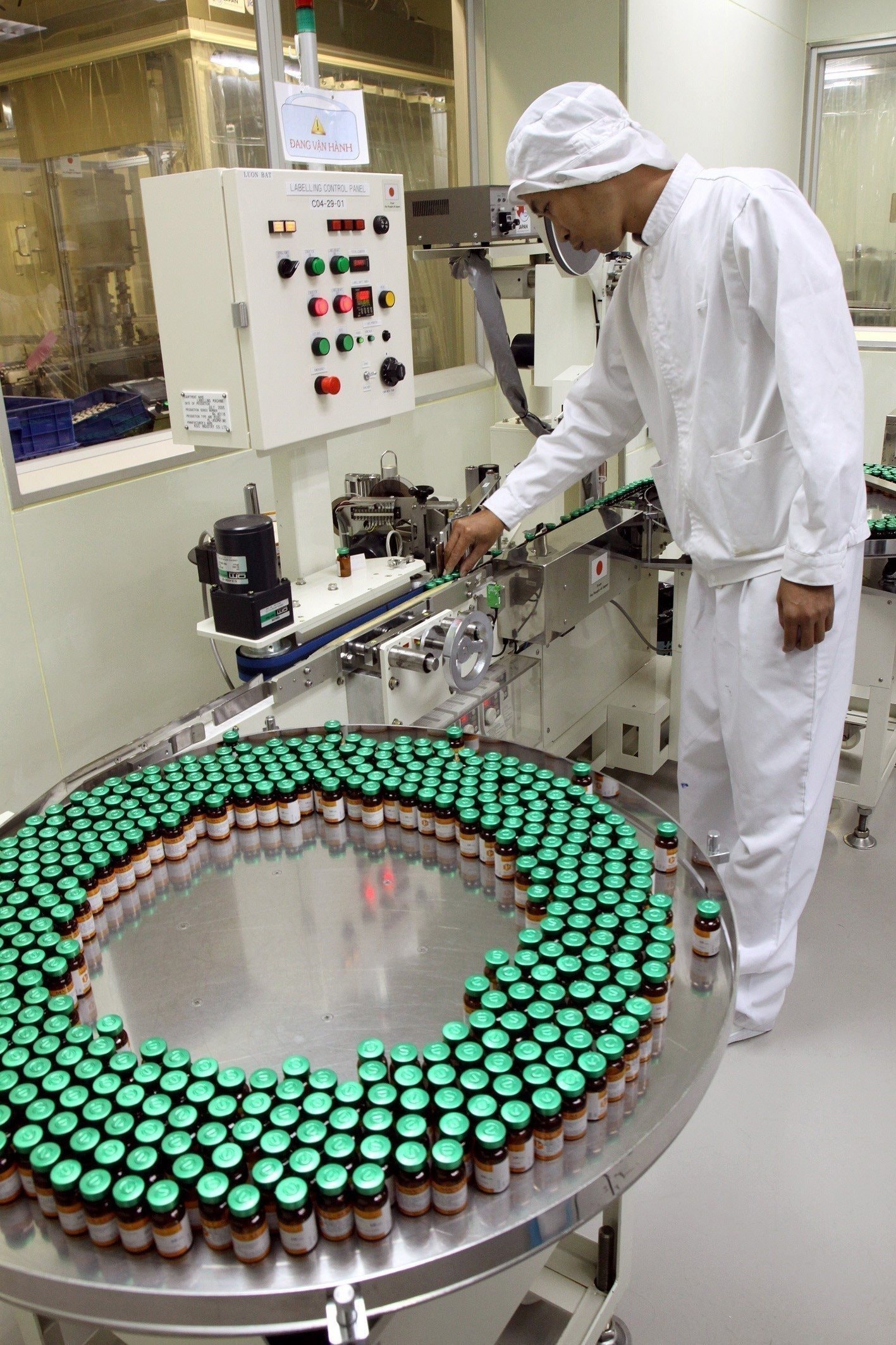
Vietnam is also known as a country that is gradually rising to an important position in the list of vaccine-producing countries in the world. In the photo: The Measles-Rubella combination vaccine produced by Vietnam has been clinically tested and evaluated as safe and effective for users in the Expanded Immunization Program, providing free vaccination for children since 2017. Photo: Duong Ngoc - VNA
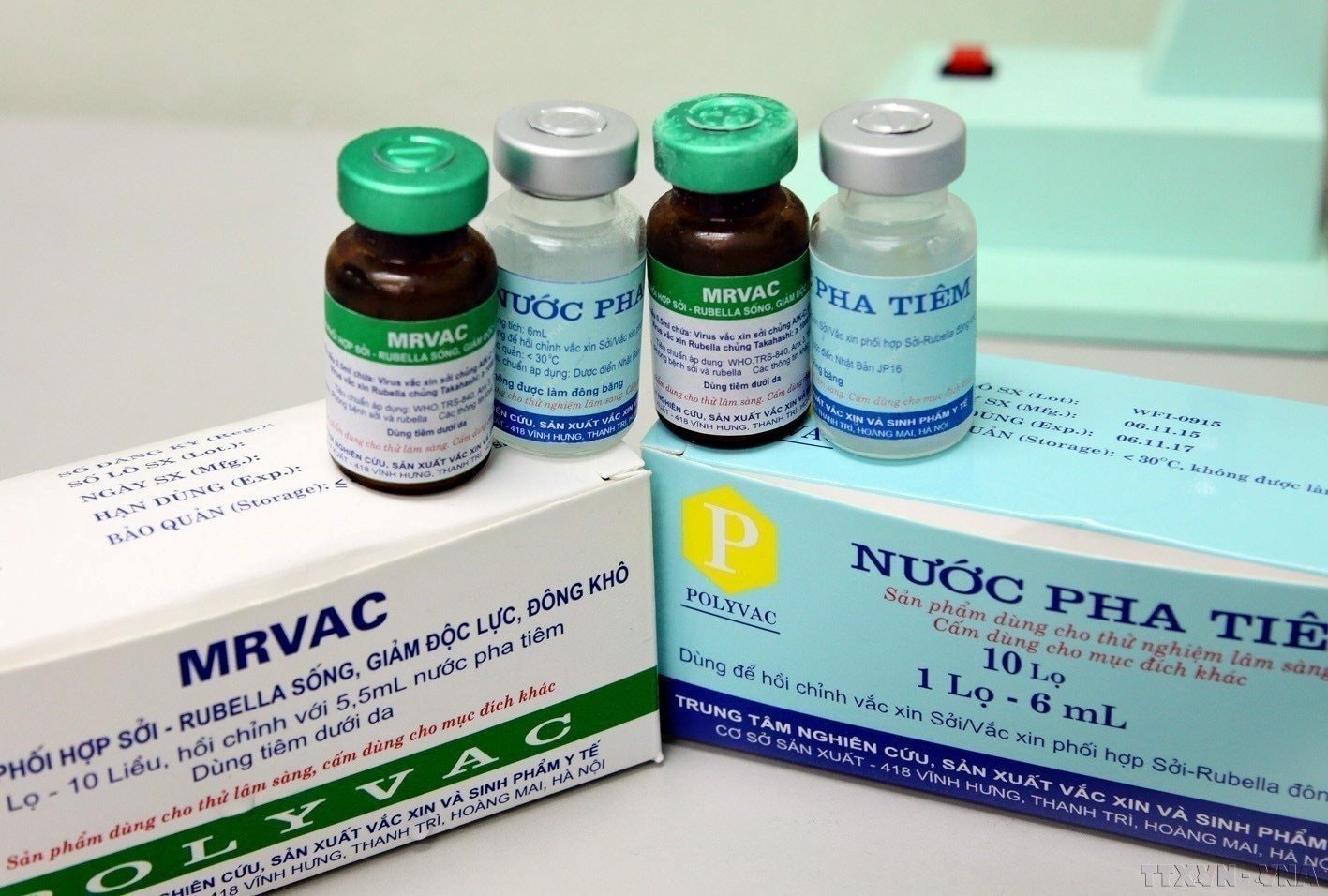
Vietnam is also known as a country that is gradually rising to an important position in the list of vaccine-producing countries in the world. In the photo: The Measles-Rubella combination vaccine produced by Vietnam has been clinically tested and evaluated as safe and effective for users in the Expanded Immunization Program, providing free vaccination for children since 2017. Photo: Duong Ngoc - VNA
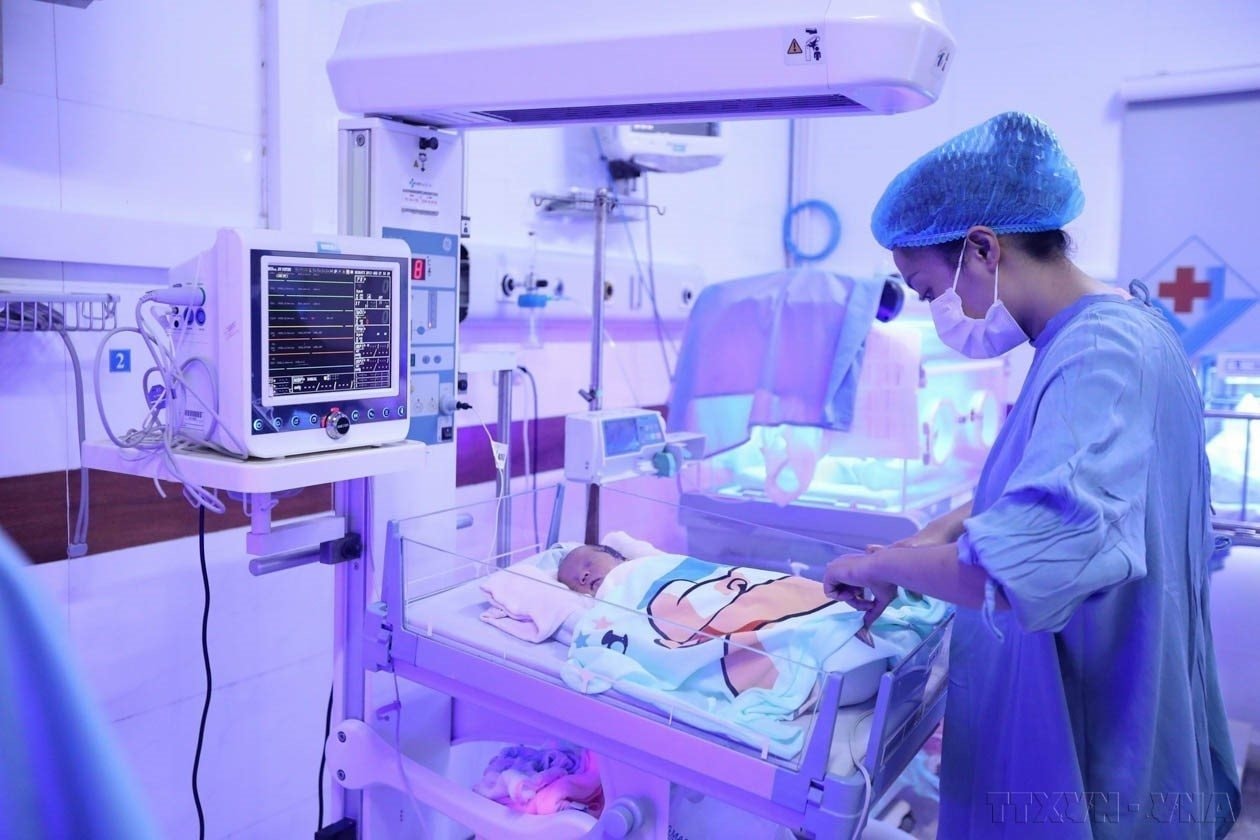
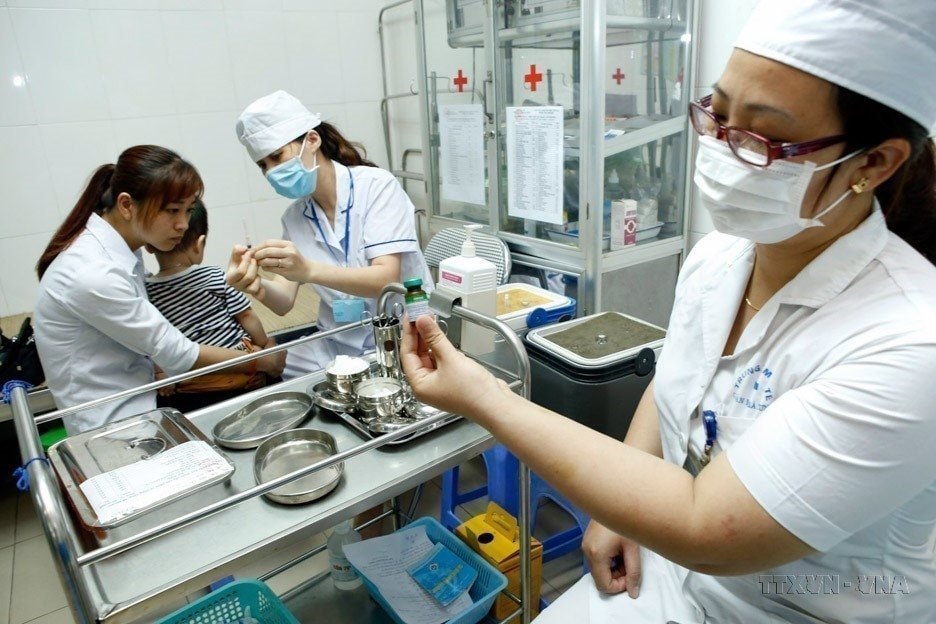
Vietnam's vaccination work has achieved many successes. (Photo: PV/Vietnam+)
In particular, during the recent COVID-19 pandemic, Vietnam mobilized the entire political system; the joint efforts and consensus of the business community and people, the effective cooperation and support of international friends, and the leadership and direction of epidemic prevention and control were implemented synchronously, drastically, appropriately and effectively.
With the efforts of the health sector, in which preventive medicine plays a key role, many epidemics have been eliminated: Smallpox was eliminated in 1978, xerophthalmia due to vitamin A deficiency was eliminated in 1995, polio was eliminated in 2000, neonatal tetanus was eliminated in 2005, filariasis and lymphadenopathy were eliminated in 2018, and trachoma was eliminated in 2024. Some diseases that were once widespread in our country but have not been recorded in many years, such as plague and cholera. Many other epidemics such as malaria, typhoid, acute diarrhea, viral encephalitis, diphtheria, whooping cough, anthrax, etc. have been controlled and no major epidemics have occurred.

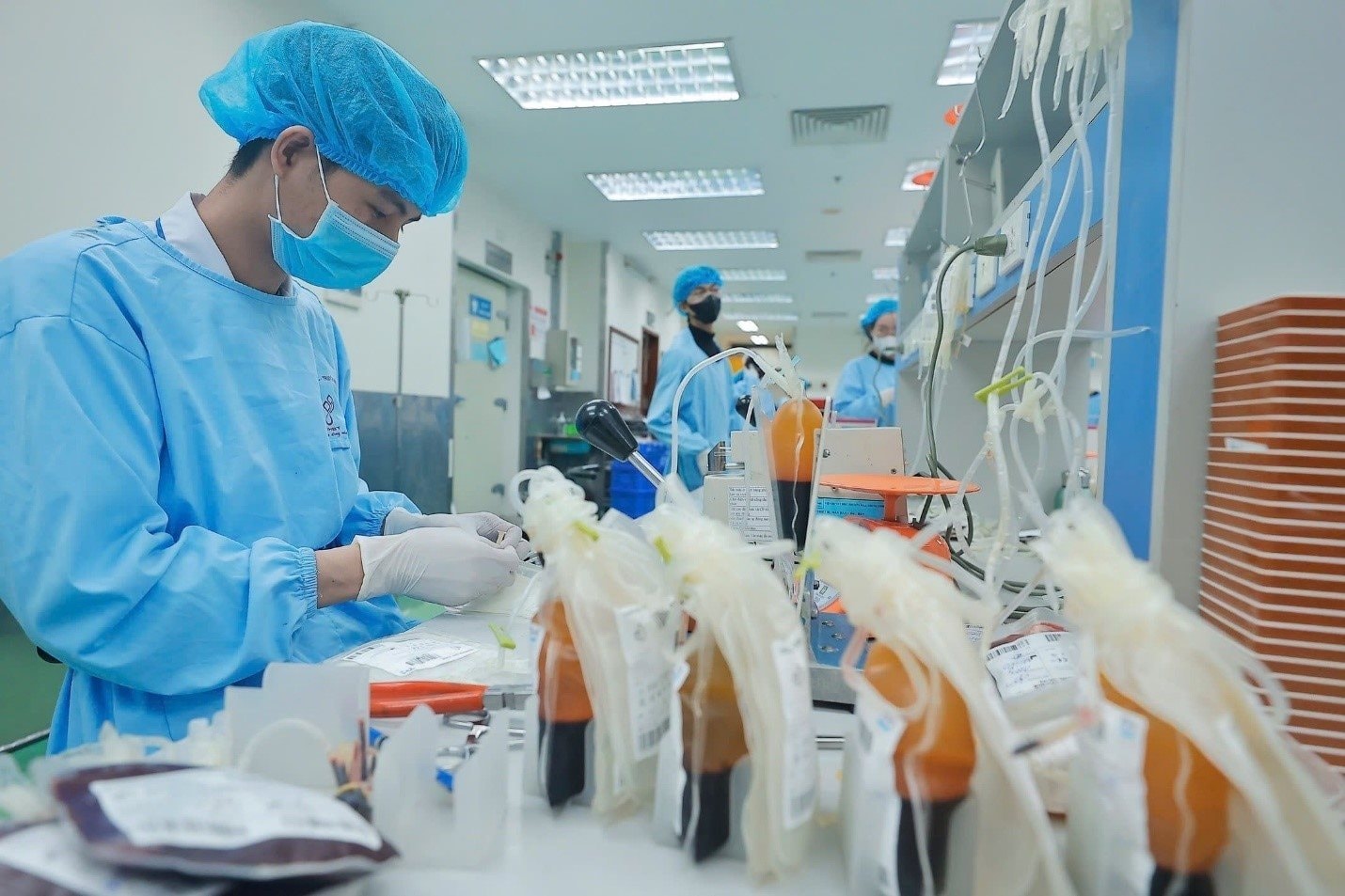
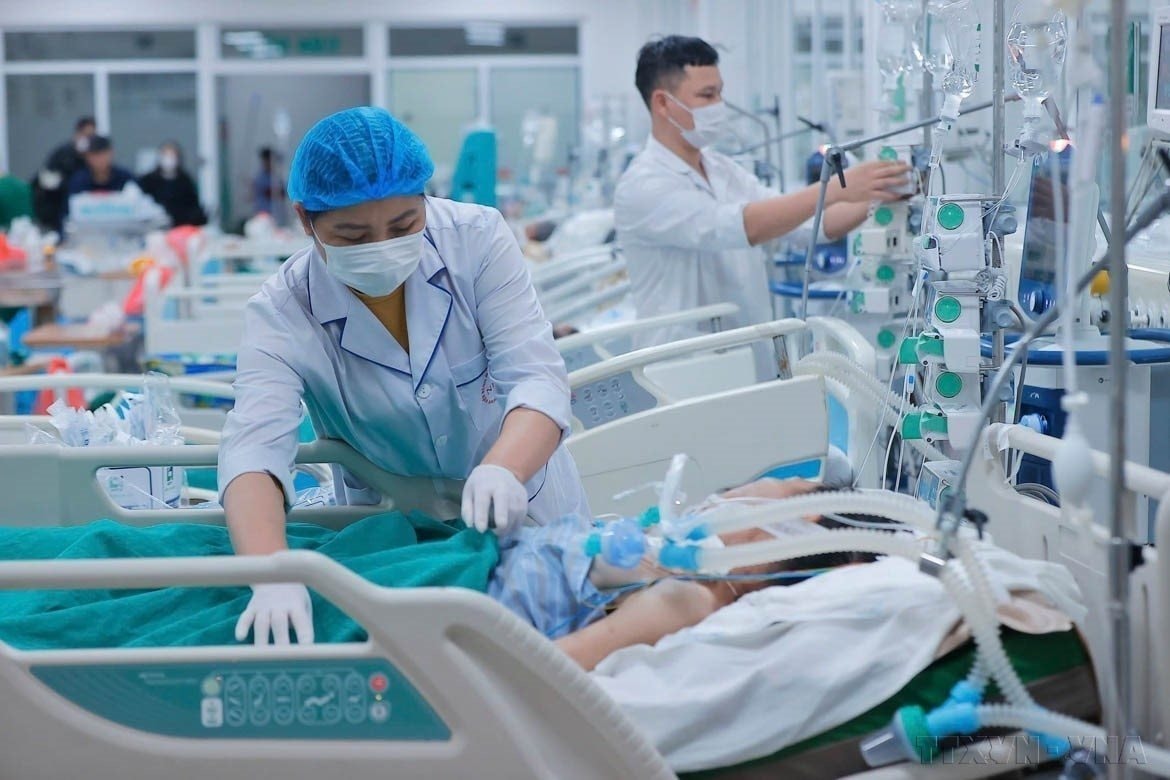

It can be said that the achievements in Vietnam's health care are very important, outstanding in reducing the number of illnesses and deaths due to diseases affecting human health, contributing positively to ensuring social security for the people. Thanks to that, the average life expectancy of Vietnamese people has increased by 33.7 years from 40 years old (1960) to 73.7 (2020). The rate of malnutrition and child mortality has decreased by 2/3; the maternal mortality rate has decreased by 3/4 compared to 1990. The physical stature of Vietnamese people has improved. From 1993 to present, the average height of Vietnamese youth has increased by 6.6 cm, reaching 168.1 cm in men (2020) and 156.2 cm in women.

Talking about the importance of health care, President Ho Chi Minh once emphasized:
President Ho Chi Minh visited and talked with cadres and staff of Van Dinh infirmary, Ha Dong, the leading medical sector in the whole North (April 1963). Photo: VNA“
Preserving democracy, building the country, creating a new life, all require good health to be successful. Every weak citizen means the whole country is weak, every healthy citizen means the whole country is healthy.
President Ho Chi Minh
Following Uncle Ho's teachings, over the years, the Party and the State have always paid attention to social security and medical examination and treatment for the people, in which the health insurance policy has received special attention in building and perfecting. The health insurance coverage rate has increased rapidly, specifically: In 2009, it covered 58% of the population, by 2023 it reached 93.35% of the population - equivalent to more than 93.307 million people participating in health insurance. The number of people with health insurance cards going to see a doctor and receive medical treatment has increased rapidly over the years: In 2009, there were 88.6 million visits; in 2015, there were 130.2 million visits; by the end of 2023, there were 174 million visits.
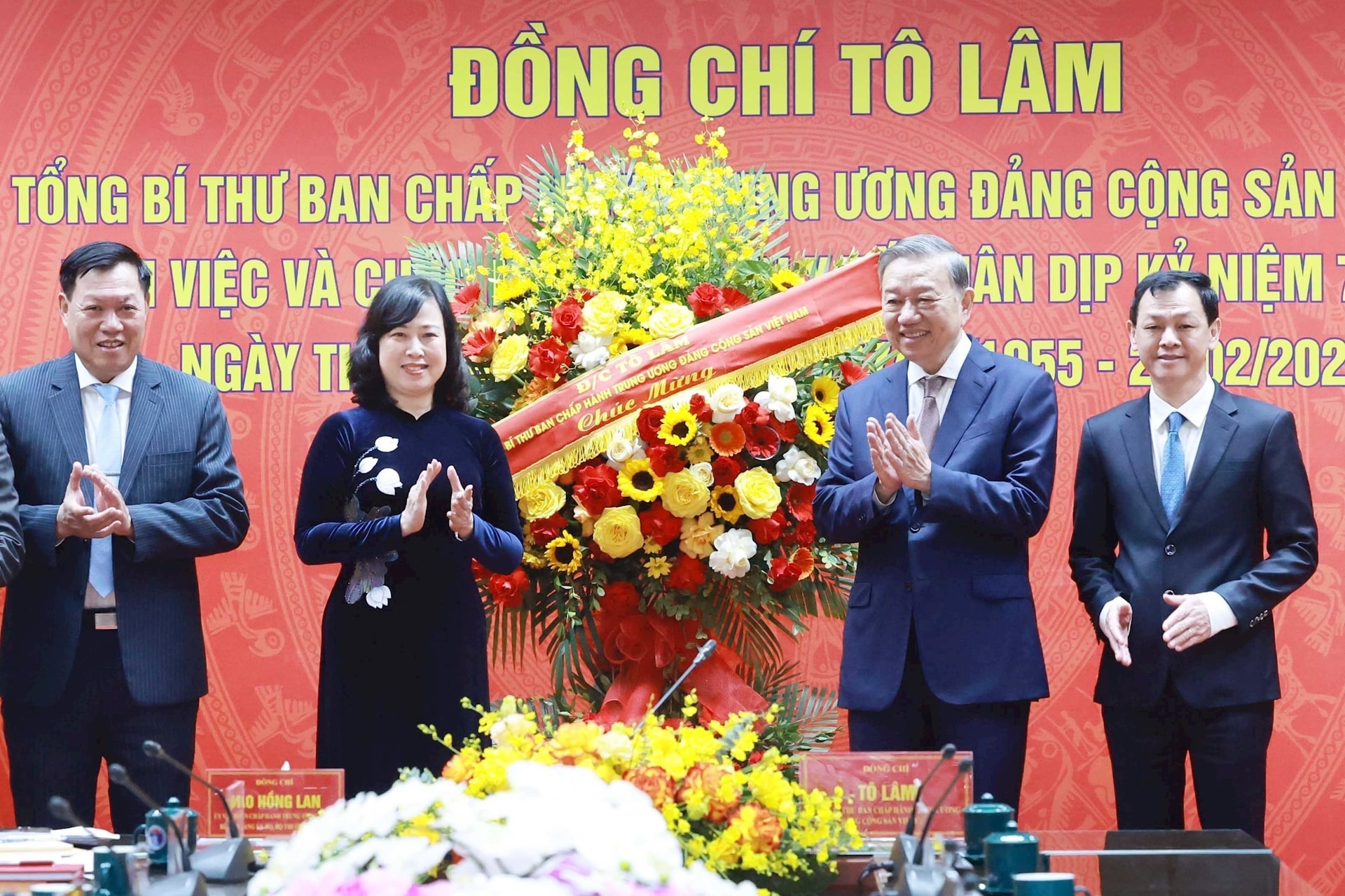
General Secretary To Lam congratulated the health sector on the occasion of the 70th anniversary of Vietnamese Doctors' Day (February 27, 1955 - February 27, 2025). Photo: Thong Nhat - VNA
The system of health insurance examination and treatment facilities is increasingly expanding and improving in quality, meeting the people's needs for health insurance examination and treatment. Nationwide, there are more than 12,800 facilities that have signed contracts for health insurance examination and treatment, including 1,768 public facilities and more than 10,000 commune health stations; the quality of health insurance examination and treatment is increasingly improving. Along with that, 1,067 private health facilities have also participated extensively in health insurance examination and treatment, serving about 4.35% of examinations, contributing to reducing the overload of public hospitals.
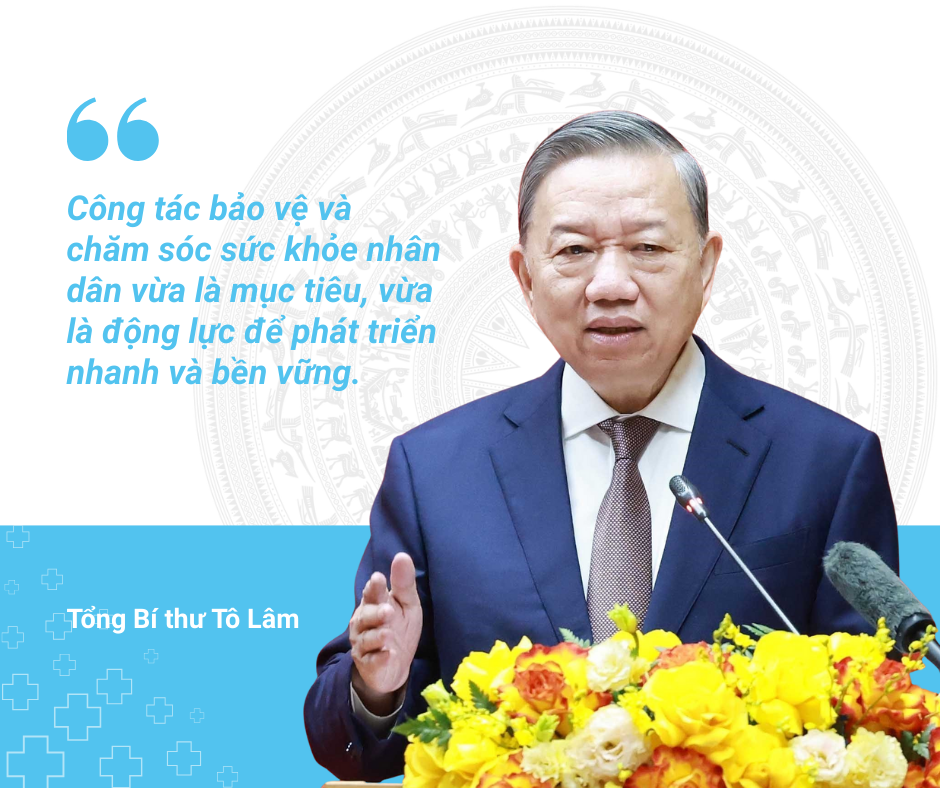
In response to the requirements of national development in the new era, General Secretary To Lam emphasized that the work of protecting and caring for people's health is both a goal and a driving force for rapid and sustainable development. Therefore, General Secretary To Lam assigned the Government Party Committee to direct the research and development of a project with a roadmap to gradually reduce the burden of medical costs for people, moving towards free hospital fees for all people in the period from 2030-2035.
According to the roadmap, from 2026, all people will have regular health check-ups at least once a year. In the 2030-2035 period, free hospitalisation will be expanded to all people after prioritising vulnerable groups such as the poor, meritorious people, children and the elderly. Free hospitalisation is not just about helping patients reduce their financial burden. It is a new way of thinking about comprehensive health care, where people are placed at the centre of development. When every person has regular check-ups, early detection and timely treatment, the health sector will shift from treatment to prevention, from passive to proactive, from coping to creating.
The move towards universal free healthcare is a very good and historic goal in the new era, the era of striving. In the process of national renewal and economic development, the Party and State pay more and more attention to people's health in the true sense, healthy people - strong country.
Minister of Health Dao Hong Lan analyzed that the consistent policy of our Party and State is to always put the protection, care and improvement of people's health first and foremost, ensuring that all people are managed and cared for, "leaving no one behind". Vietnam is internationally recognized as one of the few countries with a complete health network reaching to the villages and hamlets, ensuring the provision of basic health services to the people.
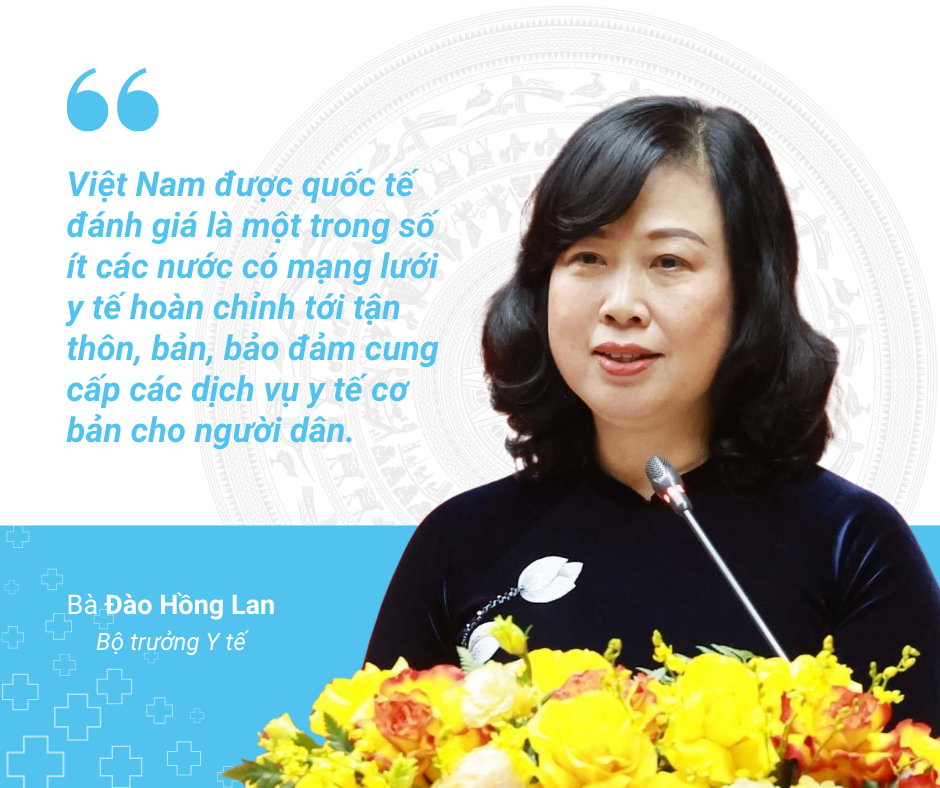
Minister of Health Dao Hong Lan said that in the next phase, the health sector will continue to innovate, develop comprehensively, promote training, scientific research, strengthen management capacity and improve service quality. The health sector will continue to invest in developing primary health care and medical infrastructure, ensuring fairness in access to health services, especially in remote areas; continue to build and perfect institutions to remove bottlenecks, promote the protection, care and improvement of people's health better and better./.
Content: Thuy Giang
Design: Hao Nguyen
Source: https://mega.vietnamplus.vn/hanh-trinh-cua-nen-y-te-tri-tue-va-nhung-khat-vong-dung-xay-dat-nuoc-6845.html



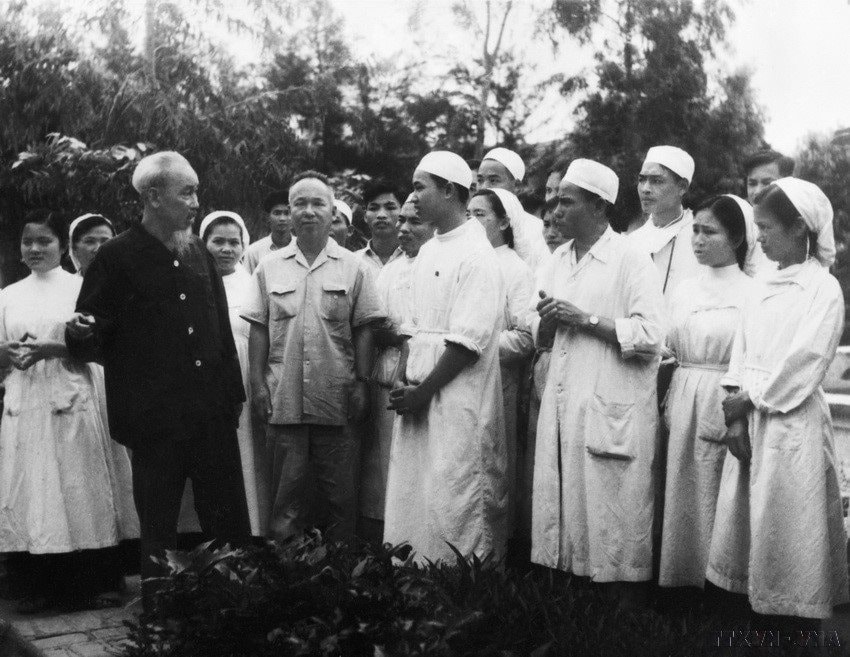
![[Photo] President Luong Cuong receives delegation of the Youth Committee of the Liberal Democratic Party of Japan](https://vstatic.vietnam.vn/vietnam/resource/IMAGE/2025/8/22/2632d7f5cf4f4a8e90ce5f5e1989194a)



























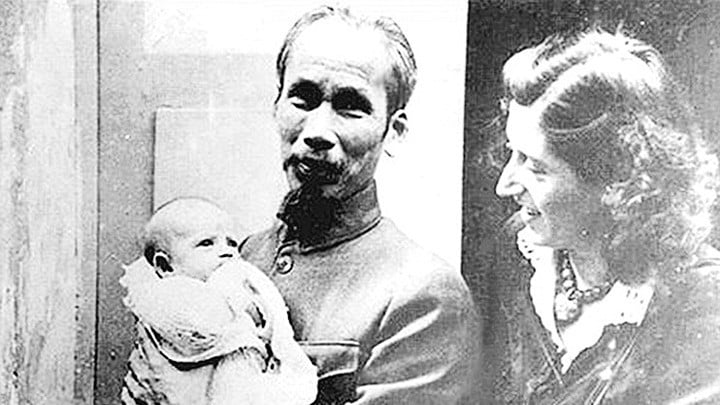













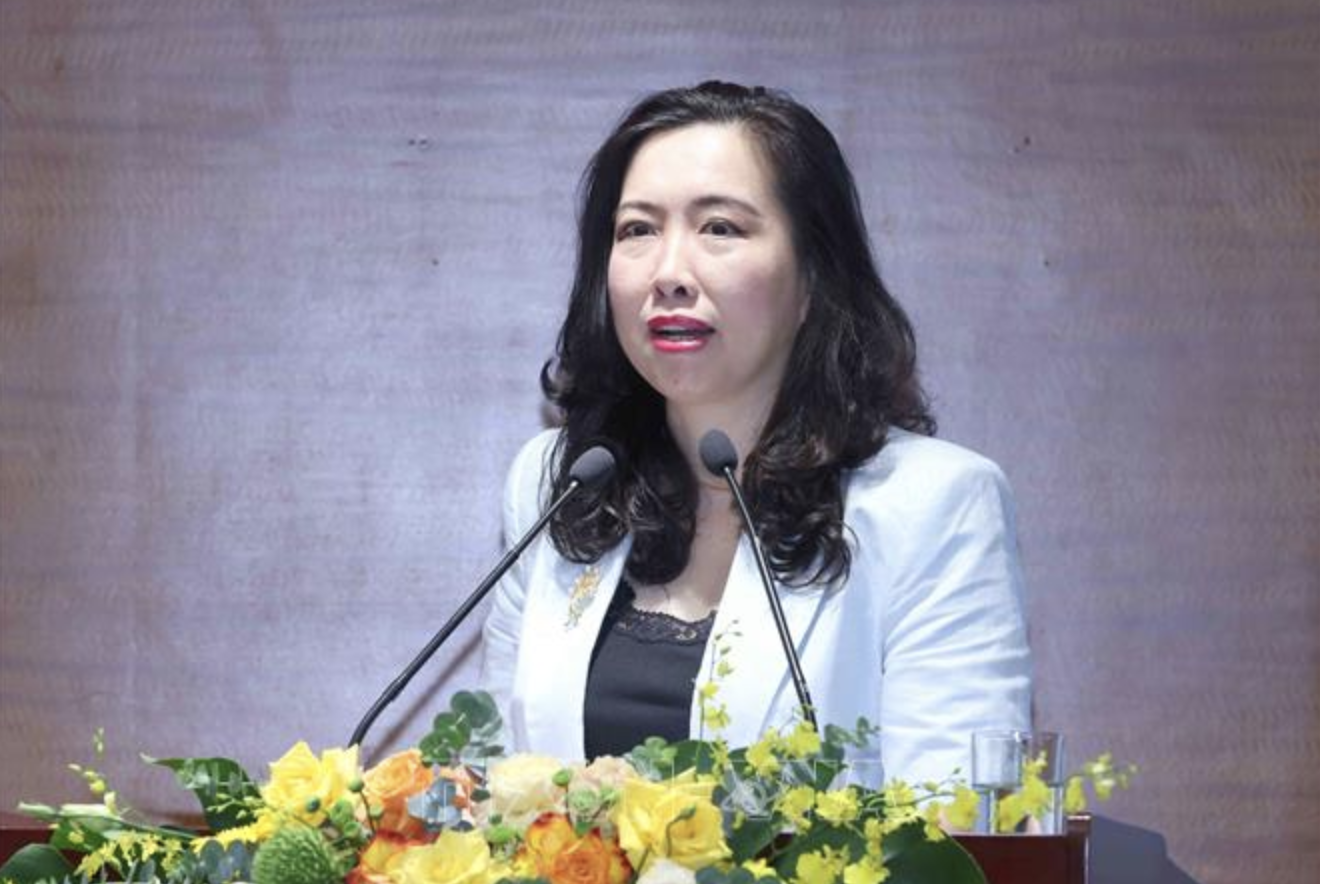










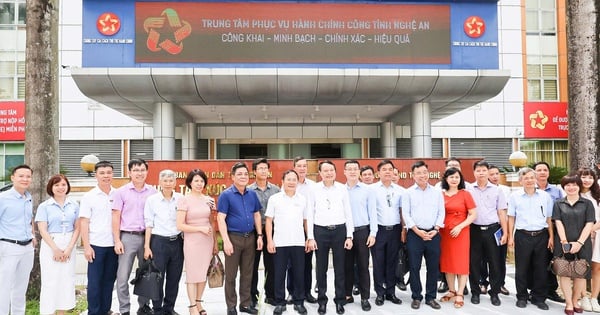


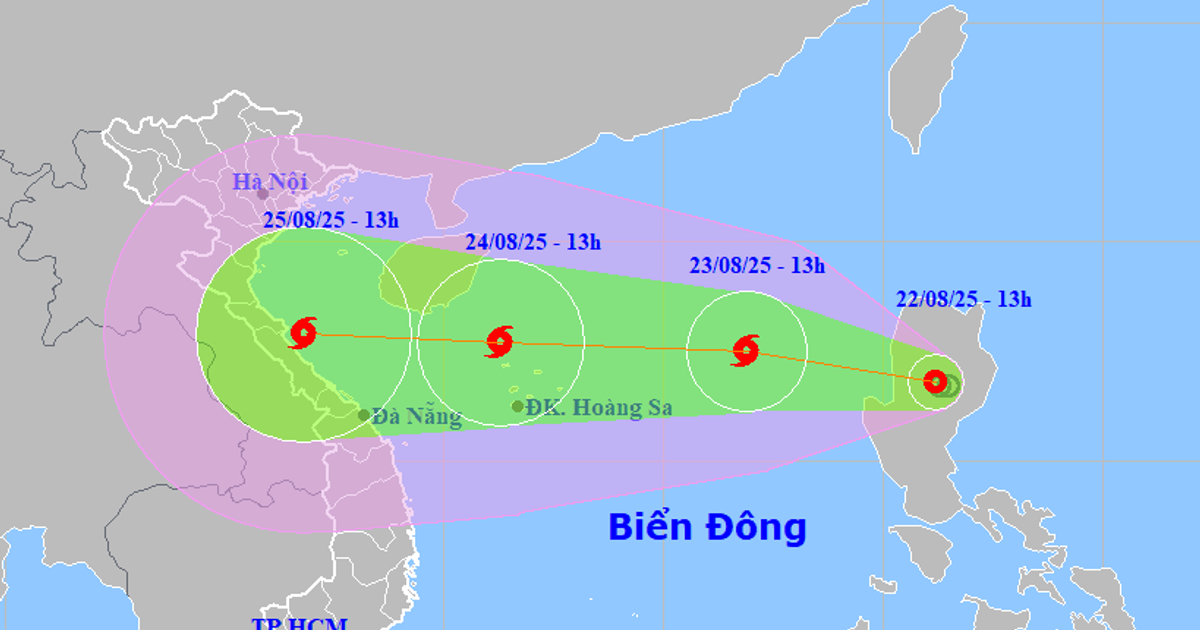



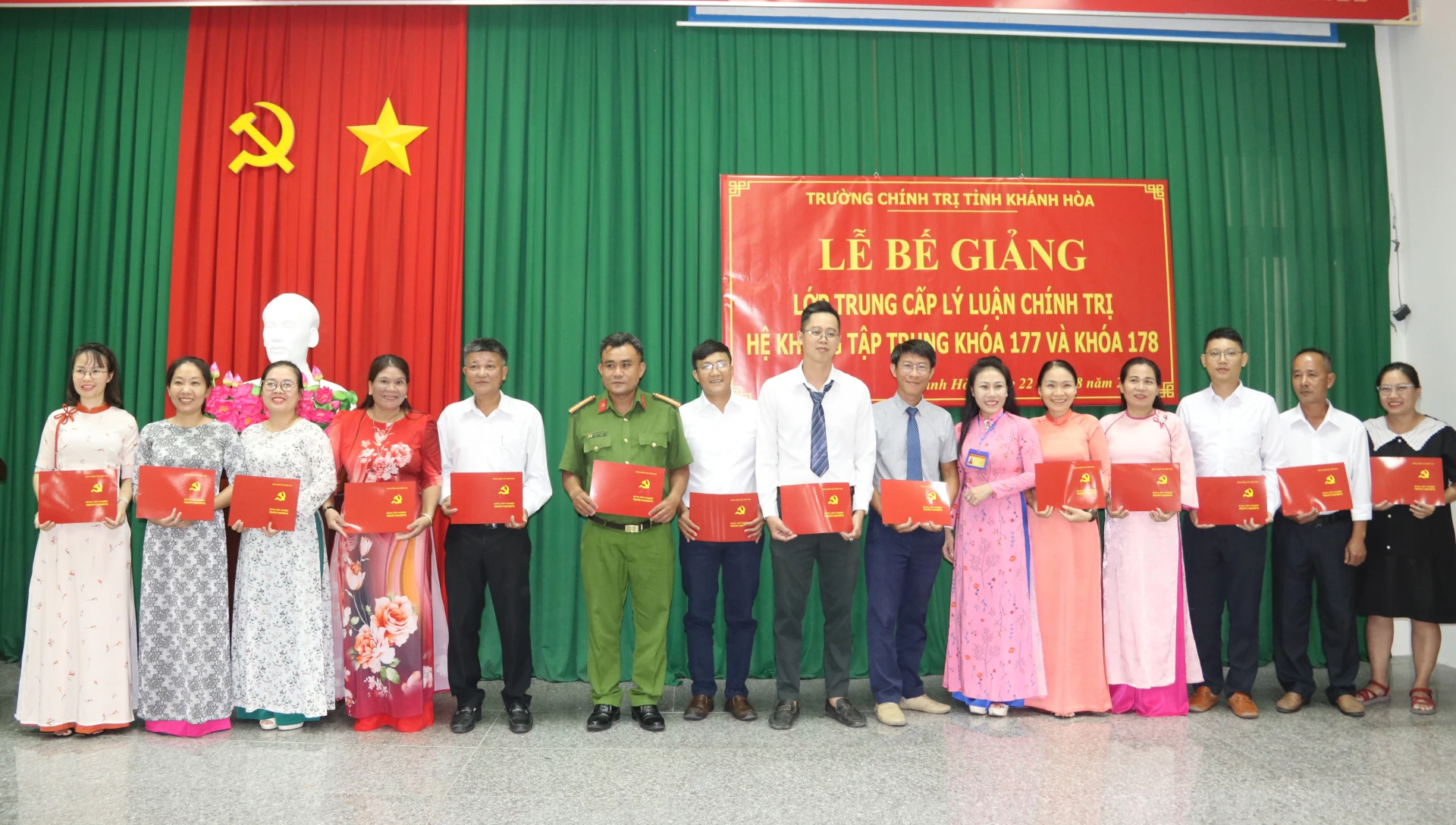

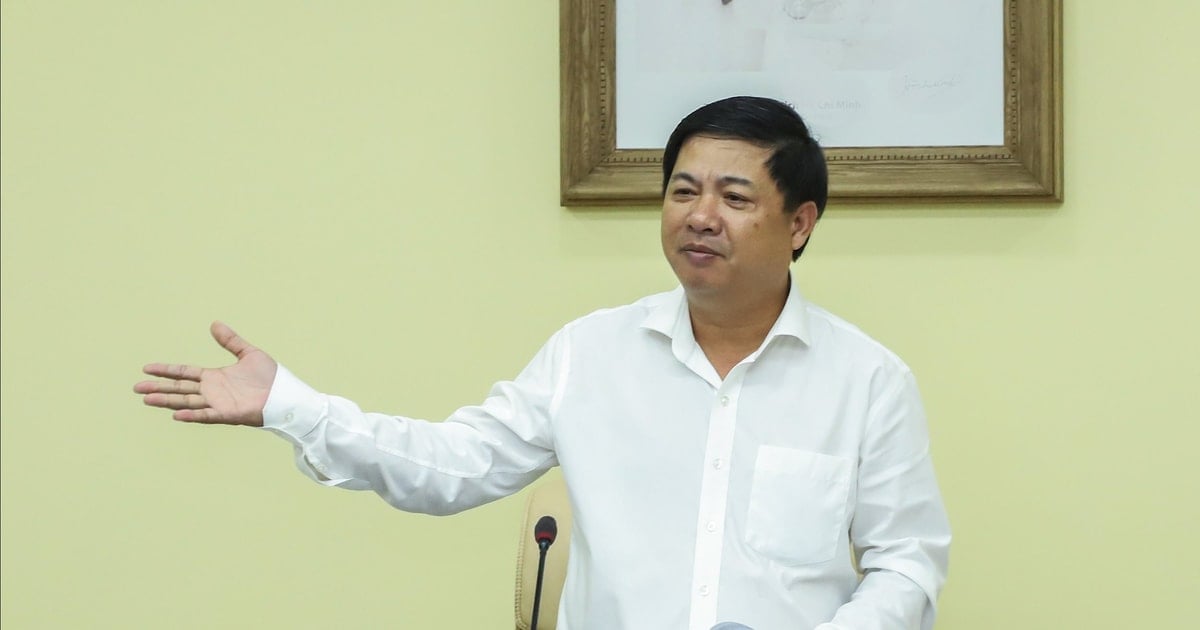








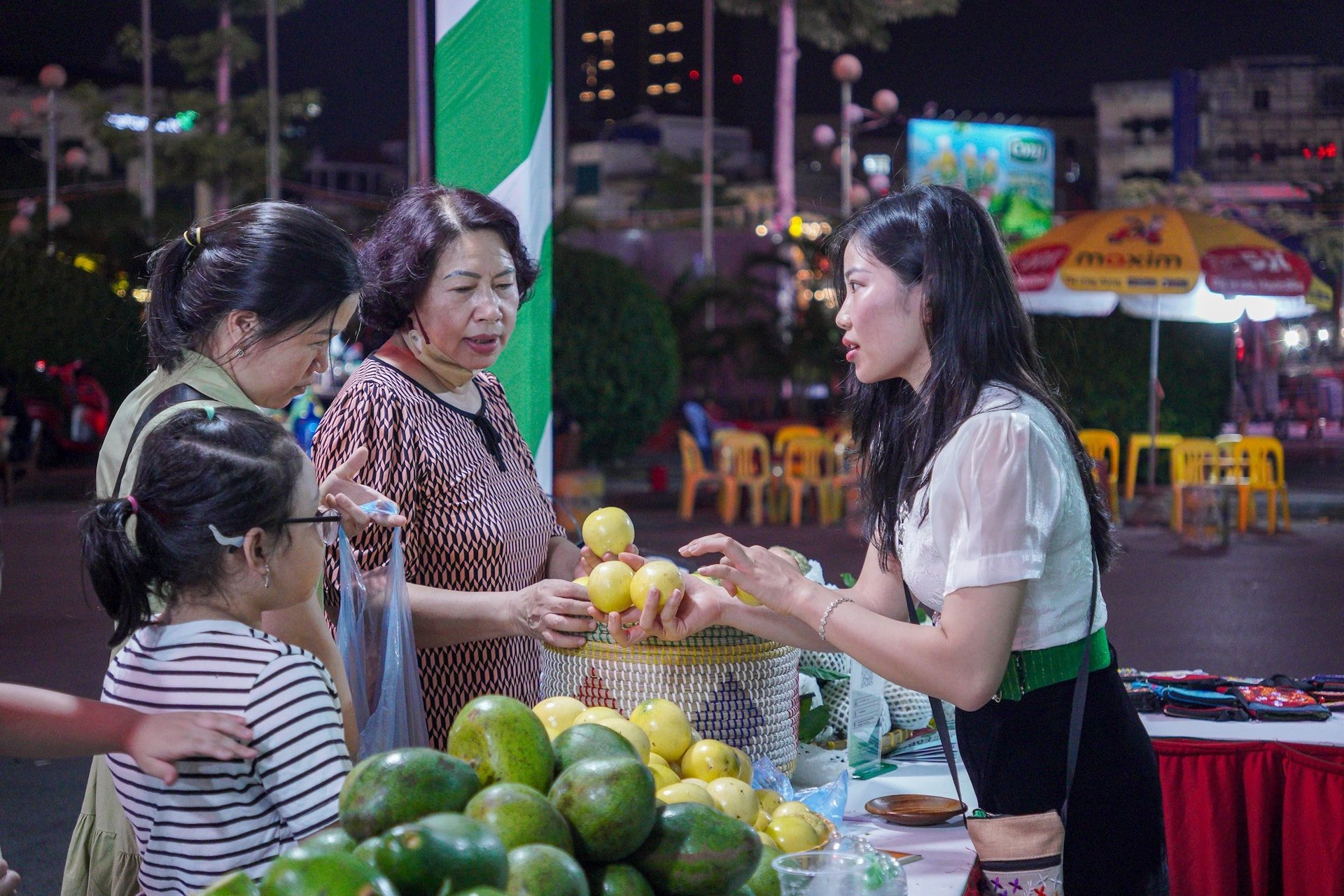






Comment (0)